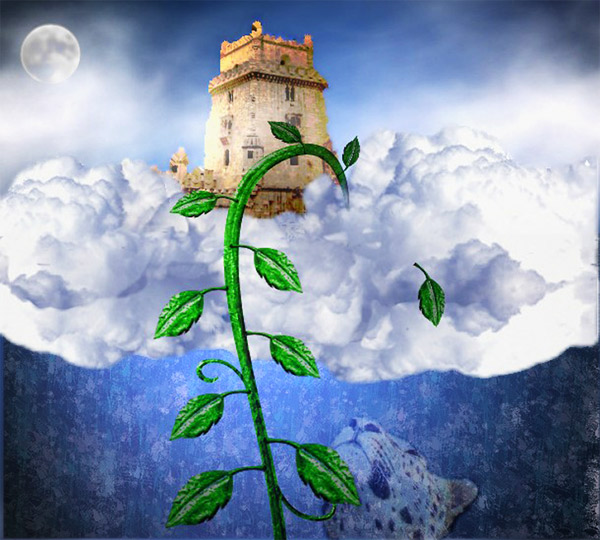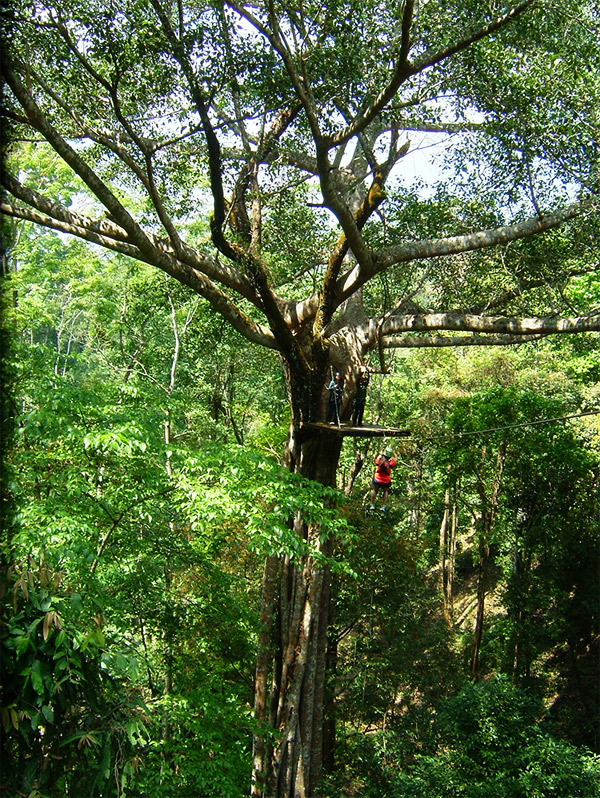
Having been brought up in England at a time before TV dominated life, when books were an important part of every child’s education, I was aware of the Fairytale of Jack and the Beanstalk by the age of 5. A magic bean planted behind Jack’s house grew and grew until it reached the sky and a whole new world was created in the distant tree tops replete with a castle and an evil giant. Kids brought up with father Christmas and the tooth fairy found nothing unusual in yet another story of the unreal coming from the mouths of their parents. As strange as it may seem I have started to see this tale as maybe having a grain of truth about its origin in the countries of S E Asia.
Living in Thailand and learning about the flora and fauna as part of my work with tourists I took an interest in the many huge trees common in the hot humid countries I travelled in. Trees in this part of the world reach over 100 feet in height and are the home for a huge array of animals and insects that seldom touch ground at any time in their lives. Monkeys, sloths, frogs, lizards, butterflies and ants abound in such trees and find food and shelter for all their lives in the canopy of the huge trees found in many gardens and village fields.
 Giant trees in Sankampaeng
Giant trees in Sankampaeng
The great surprise on reading about these giant trees is that many are in the family of ‘beans’ which we westerners think of only as small plants that twine around sticks providing vegetables for our dinner plate. The legume family in western countries restricts itself to being a pretty small plant in comparison to the mighty beans of Asia which are mainly trees and grow anywhere up to 40 metres in height with canopies housing a whole variety of wildlife. Some of the seed carrying pods are huge, as one would expect of a mammoth tree but it’s not always the case that a big tree emerges from a big seed. The Samanea Saman, commonly known as the rain tree or Cham Cha in Thailand, has a pod approximately the size of the common broad bean of England. In tropical conditions this tree grows at an alarming rate and within 5 years is as big as most mature trees in an English garden.
When the first European traders arrived in Thailand it is quite possible to imagine a new settler in Thailand being given some beans by a native and planting them in expectation of some vegetables from his garden in a few months time. Just imagine his surprise when 5 years later he has a tree 30 feet tall and still growing at an alarming rate. After 20 years he truly would have had a whole new world, an animal kingdom, sitting outside his house dominating his garden and giving him an idea for a story to shock his family when he returned to Europe. Asia had already provided other unbelievable tales of flying squirrels and snakes, frogs that lived in trees, flies with a light inside and fish that walked on land. Surely a castle in a bean tree wasn’t much more far -fetched than these tales?